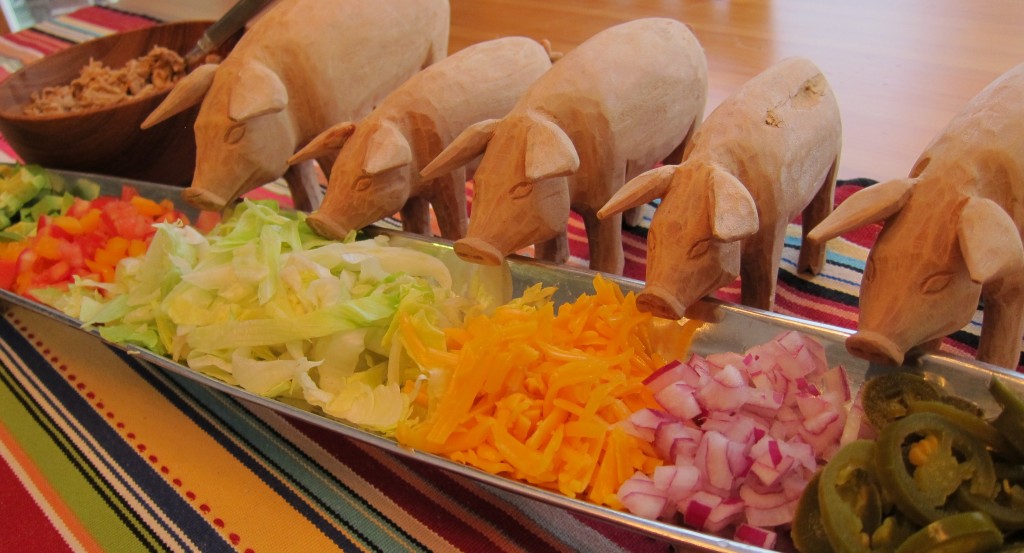Despite the fact that it’s getting hot here (as in I don’t want to go outside hot), the farmers market has been bustling the past two weeks. One reason is that peaches are in season. Folks line up for these early, and they sell out quickly (although personally, I think they still need another week or two):
The variety of tomatoes making their brief appearance is another draw:
Along with big bunches of basil to pair with them:
Squash (and squash blossoms) are abundant:
 I love the bundles of Bright Lights swiss chard. I call them the Electric Chard Orchestra:
I love the bundles of Bright Lights swiss chard. I call them the Electric Chard Orchestra:
One of my favorite vendors this time of year is Billabong Fresh Flower Farm, with its colorful seasonal flowers:
I couldn’t resist these cute little 2″ baby eggplants:
Or this mutant white carrot:
The thing that intrigued me most this week, however, was giant stalks of elephant garlic:
They were in bloom, and the grower referred to the flower stalks as scapes (a leafless stalk in plants that arises from a rosette of leaves and bears one or more flowers), although I’m not really sure they’re considered scapes once they’ve bloomed. I think they’re just called flowers at that point:
She told me that the local chefs like the flower heads because you can cook the flowers and they hold their shape. She also told me that she used to trim the roots, but the chefs asked her to leave them on because they fry them up and use them as garnish:
According to the grower, I could cook with every part of the garlic plant. Well, that was a throwdown, if ever I heard one. So I went home with my big ass garlic and proceeded to cook with every part of it. The chefs she referred to must have magical powers. The stalk part, which I have seen referred to as tasting similar to asparagus, was as tough as a twig — inedible, really. The flowers did hold their shape pretty well, but their little teeny tiny stems looked like hair in my saute. I’m guessing they’re probably better uncooked as a garnish. I was so excited to fry up the roots to use as a crunchy garnish, only to discover that they tasted exactly like the dirt they grew in.
The garlic bulb, however, was wonderful. I chopped it and sauteed it in olive oil, with a pinch of salt and pepper. It became soft (but not mushy) and sweet without the bite of regular garlic. I used it, and some of those nice tomatoes and basil, to make a pizza. (If you are wondering why the cheese on my pizza is so browned, it’s because that is how my husband prefers it.) If you see fresh elephant garlic, give it a try!

















